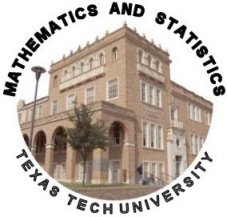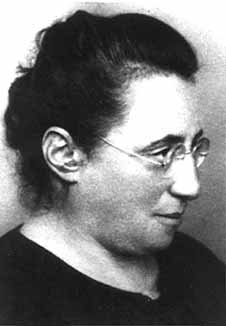
 |
4th Emmy Noether High School Mathematics Day |
| Texas Tech University, Department of Mathematics and Statistics | |
| May 3rd 2006 | |
|
Workshops for Students
|
 |
|
Greeks, Graphs, Bridges and Brains
|
|
|
Mathematics has no Answers Have you ever wondered where the word problems in your algebra book come from? In this workshop we will expose their source and try to decide if a selection of these problems are dumb, dumber or dumbest! We will take a close look at one problem in particular. We look at the problem “If Jane can mow the yard in 1 hour and her brother John can mow the yard in two hours how long will it take them to mow the lawn if they work together?” in some detail. We will find the origins of this problem in cave art from the Pleistocene. We will ask the eternal question “Does this problem make sense?” and find the answer that is surely NO. However, we will try to find a version of the problem that does make sense and in doing so we discover that mathematics doesn’t have answers but is only a tool for helping to make real life decisions.
|
|
|
THE MATHEMATICS OF ART AND ART OF MATHEMATICS: ORIGAMI The art of Origami – or the science of paper folding – is based on some fundamental concepts of mathematics. In the past few years, origami models have entered the mathematics libraries, as well as many math clubs, as a very hot and fun topic. Many of the math and origami books, although for use in the classroom or clubs, go way beyond the material taught in schools. Our goal will be to investigate some of the fundamental geometric properties of origami 3-D models. Higher geometric concepts such as discrete surfaces and surface curvatures will be approached through polyhedral models. Participants will be able to start on some origami projects hands-on – so everybody should get ready for some paper folding. At the end of the workshops, 50 beautiful and quite intricate 3D origami paper roses of various colors will be distributed as a souvenir. They traveled to Texas Tech University all the way from Japan.
|
|
|
Can lines and circles help us
find Bin Laden?
Suppose that two points on the plane along with a
direction at each point are prescribed. Suppose we connect the two
points with curves such that the tangents to the curves at those points
are along the prescribed directions. If we only use curves that have
"curvature" greater than a certain minimum value, then a basic
question is: "what is the shape of the curve of least length?". It was
shown in 1954 by L. E. Dubins that these curves are either of
Arc-Line-Arc or Arc-Arc-Arc types, where Arc means a portion of a circle
with a radius that is related to the prescribed curvature value. We will
discuss how this result is useful in searching the streets of hostile
cities using Micro Air Vehicles.
|
|
|
|
|
|
Symmetries and permutations
|
|
|
How do you use “bones” and rods to multiply? What’s a Slide-rule? How do French children do long division? What do Vedic sutras have to do with calculation? These and other questions will be answered as we explore Calculation across Cultures and History.
|
|
|
Workshops for Teachers
|
|
|
Water, Water Everywhere- to make a student think!
Is math all wet? In this workshop it is. We will do
several hands-on activities which will involve water but which also
illustrate several important mathematical topics. (Time permitting, we
will have a short group discussion on possible initiatives to increase
the numbers of mathematics teachers.)
Dr Yanik was awarded the
Presidential Award for Excellence in Science, Mathematics, and Engineering
Mentoring during ceremonies in Washington DC , May 16, 2005! We are proud to
have her here at TTU!!
|
|
|
Integrated math-science modules in k-12 classrooms Innovative activities that link mathematics and science will be presented. These models are mostly designed for use in the middle schools. But teachers may adapt them to suit other grade levels. These activities will illustrate problem solving strategies that are applicable to all grade levels. Different pedagogical approaches will also be explored. The use of the modules as enrichment in the K-12 classroom will be discussed.
|